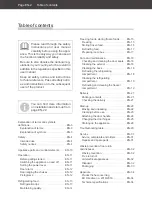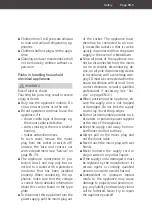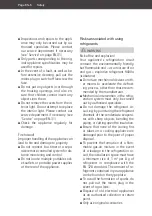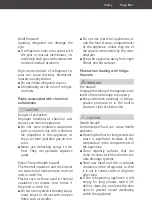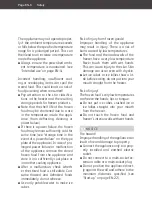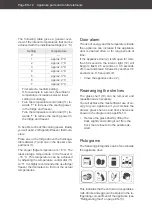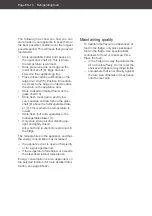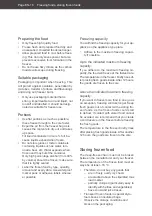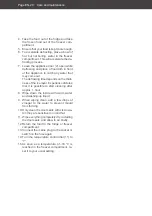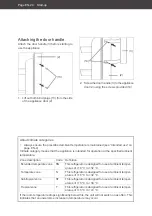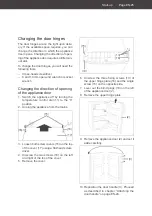
Appliance parts and control elements
Page EN-12
The following table gives a general over-
view of the interior temperatures that can be
achieved with the individual settings (± 2 °C):
Setting
Temperature
0
––
1
approx. 9 °C
2
approx. 7 °C
3
approx. 5 °C
4
approx. 4 °C
5
approx. 3 °C
6
approx. 2 °C
7
approx. 0 °C
• First select a medium setting.
• If, for example in summer, the ambient
temperature increases, select a lower
setting accordingly.
• Turn the temperature control dial (11) to-
wards “7” to increase the cooling power
in the fridge and freezer.
• Turn the temperature control dial (11) to-
wards “1” to reduce the cooling power in
the fridge and freezer.
To be able to check the cooling power, ideally
you will need 2 refrigerator/freezer thermom-
eters.
Place one in the fridge above the fruit/vege-
table drawer (7) and one in the freezer com-
partment (1).
The proper fridge temperature is +6 °C. The
ideal storage temperature in the freezer is
–18 °C. This temperature can be achieved
by adjusting the temperature control dial (11)
to “3”. It is highly recommended to use fridge/
freezer thermometers to find out the actual
temperatures.
Door alarm
The use of energy and the temperature inside
the appliance can increase if the appliance
door is opened often or for long periods of
time.
If the appliance door (2) is left open for more
than 60 seconds, the interior light (12) will
begin to flash: 0.5 seconds on, 0.5 seconds
off; 3-second break; followed by another 0.5
seconds on, 0.5 seconds off.
• Close the appliance door (2).
Rearranging the shelves
The glass shelf (10) can be removed and
repositioned as necessary.
You will achieve the most efficient use of en-
ergy for your appliance if you combine the
drawer, glass shelves and door shelves as
shown in the diagram on page EN-13.
• Remove the glass shelf by lifting the
back slightly and pulling it out from the
front, then reinsert it in the position de-
sired.
Pictograms
The following pictograms can be found inside
the appliance door:
This indicates that fresh fruit and vegetables,
milk, drinks and eggs can be stored in the re-
frigerating compartment of the appliance (see
“Refrigerating food” on page EN-13).





